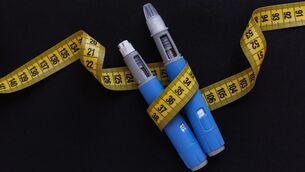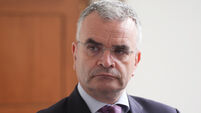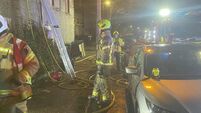Ireland’s population is youngest in the EU

22% of our 4.7m-strong population are aged 0-14, compared to an average of 15.5% across our 27 EU neighbours.
We also have the joint lowest proportion of over-65s — just 13%, compared to an 18.5% average across the other states.
It’s the opposite of ageing Italy and Germany. Germany’s over-65s make up 21% of the population and its under-14s just 14%. Italy has 22% in the older age bracket and just 13% in the younger.
The trend looks set to continue, too, as Ireland, along with France, has the joint highest fertility rate, of two babies per woman.
Greece, Hungary, Portugal and Spain are only at a rate of 1.3 — insufficient to ensure the natural replenishment of population — while Germany and Italy fare little better, with a rate of 1.4.
The figures are revealed in the annual State of the World Population report. It was released today by the United Nations Population Fund, which examines global trends.
It looks not just at population numbers, but at the associated issues of contraception, birth rates among adolescent girls, and access to skilled health personnel during childbirth.
A key issue this year is the vulnerability of women and girls among the refugees fleeing the world’s many conflict zones, including Syria.
It warns of the difficulties in supporting healthy pregnancies while on the move, and of the high risk of problems during childbirth, and the post-natal period for women who have received sporadic or no medical care.
“Pregnancy and childbirth are additional vulnerabilities for women and girls in conflicts and crises. Sixty per cent of preventable maternal deaths take place among women struggling to survive conflicts, natural disasters and displacement,” the report says.
It warns that women and girls are more likely to become sex workers to survive while displaced, to suffer sexual violence, and to be married off early by parents, who fear they have no other way to protect them.
Women in many cultures are also less likely to breastfeed, because of the lack of privacy in makeshift accommodation, at a time when their infants need good nutrition more than ever.
For similar reasons, they may avoid communal toilet and washing facilities, leaving them prone to infection, or they may only use them under cover of darkness, which leaves them vulnerable to attack.
The UNFPA is urging all humanitarian organisations to be aware of the particular needs of women and girls when planning assistance.
“In the tumultuous early phase of a crisis, food, shelter and care for acute physical trauma often seem the most compelling needs, with gender, or any other kind of discrimination, something to be put off for a safer day.
“Thinking this way, however, can make a response blind to realities on the ground — including those that shut women and girls off from assistance or leave them vulnerable.”











